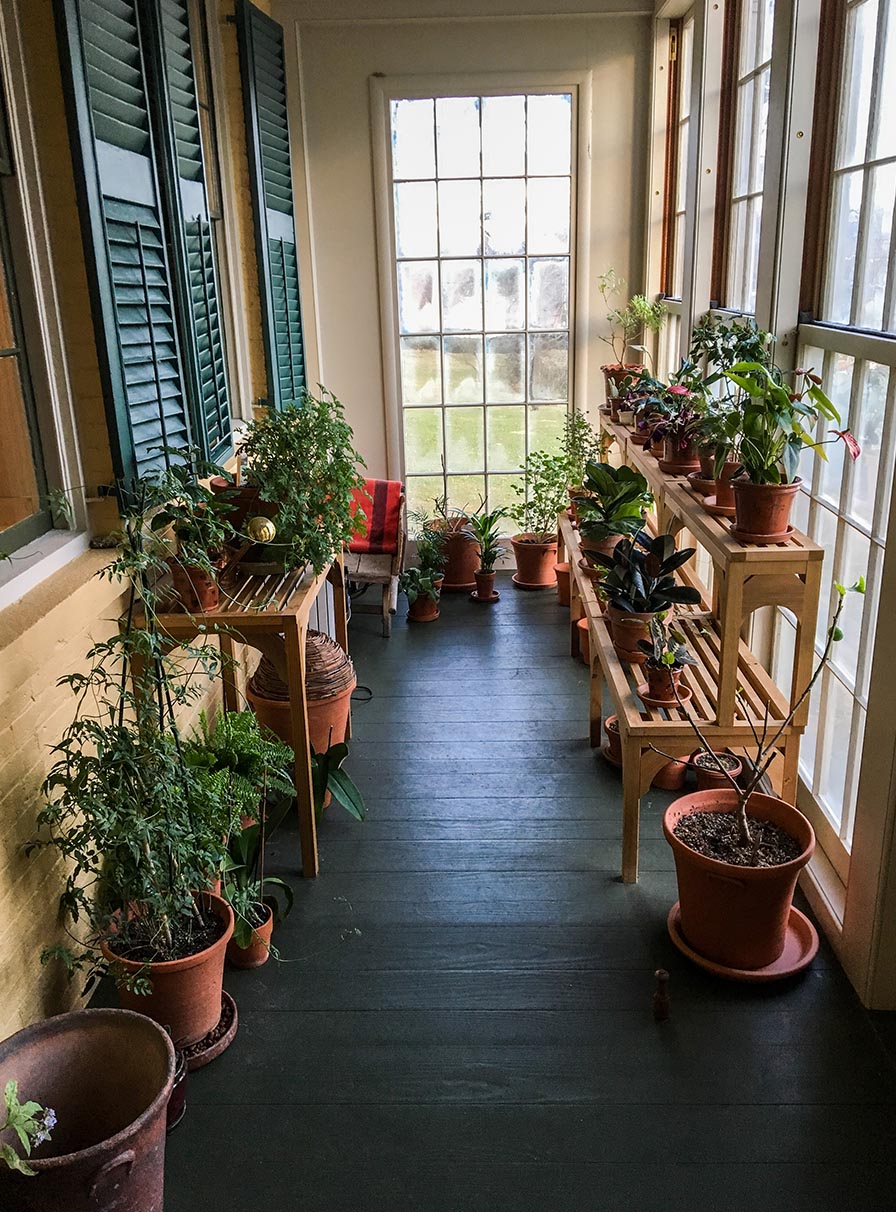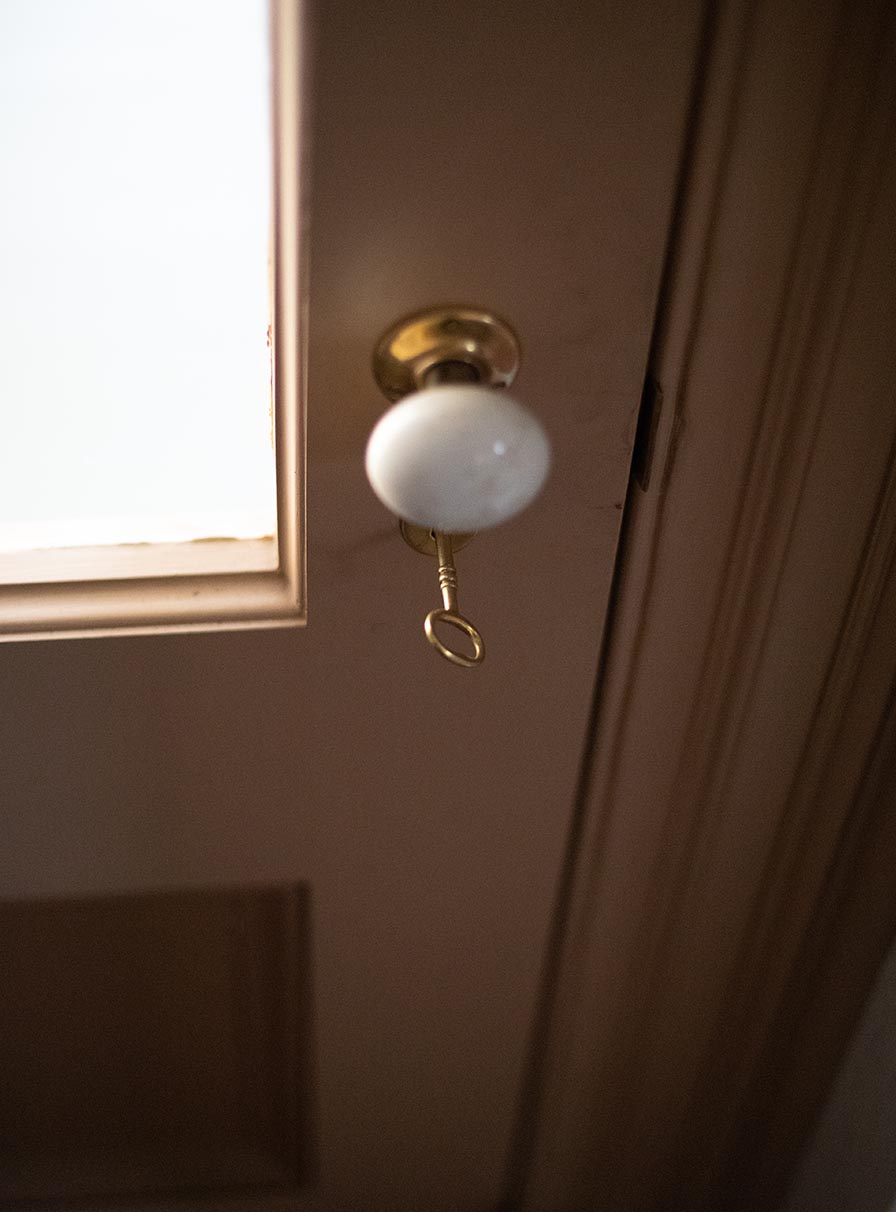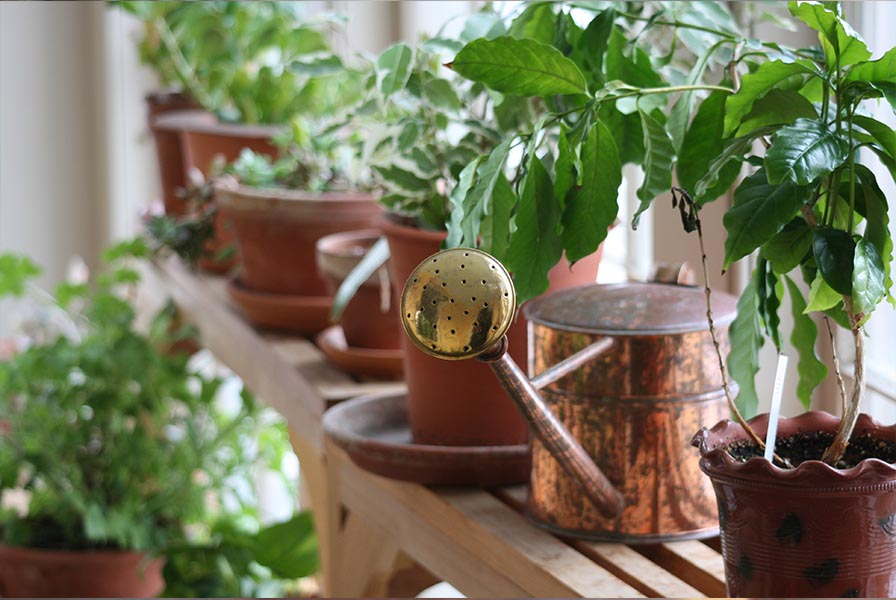“a fairyland at all seasons”
Among the renovations at the Homestead when Edward Dickinson moved the family back in 1855 was the addition of a glass conservatory for the twenty-five year old Emily Dickinson. She spent countless hours tending her private indoor garden where she could cultivate rarer plants like jasmine and oleander. In 1916 the diminutive conservatory was torn down, but 100 years later the Emily Dickinson Museum restored the space using the same windows, preserved from the original structure.

Dickinson accessed her conservatory through this door from the library. In a letter to friend Elizabeth Holland in March 1866, Dickinson wrote, “My flowers are near and foreign, and I have but to cross the floor to stand in the Spice Isles.” As she became more reclusive, Dickinson’s flowers and poems served as emissaries to friends and acquaintances to acknowledge birthdays, share kind regards, comfort in time of illness, or express condolences.
Emily Dickinson to Elizabeth Holland (L315), early March 1866, in The Letters of Emily Dickinson, ed. Thomas H. Johnson (Cambridge, MA: Belknap Press of Harvard University Press, 1958), 2:449.

The poet’s niece Martha remembered the conservatory thus: “Emily’s own conservatory was like a fairyland at all seasons, especially in comparison with the dreary white winter cold outside. It opened from the dining-room, a tiny glass room, with white shelves running around it on which were grouped the loveliest ferns, rich purple heliotrope, the yellow jasmine, and one giant Daphne odora with its orange-bloom scent astray from the Riviera, and two majestic cape jasmines, exotic kins to her alien soul. She tolerated none of the usual variety of mongrel house plants. A rare scarlet lily, a resurrection calla, perhaps—and here it was always summer with the oxalis dripping from hanging baskets like humble incense upon the humble heads of the household and its frequenters.”
Martha Dickinson Bianchi, The Life and Letters of Emily Dickinson: By Her Niece, Martha Dickinson Bianchi (Boston: Houghton Mifflin Co., 1924), 52–53.
